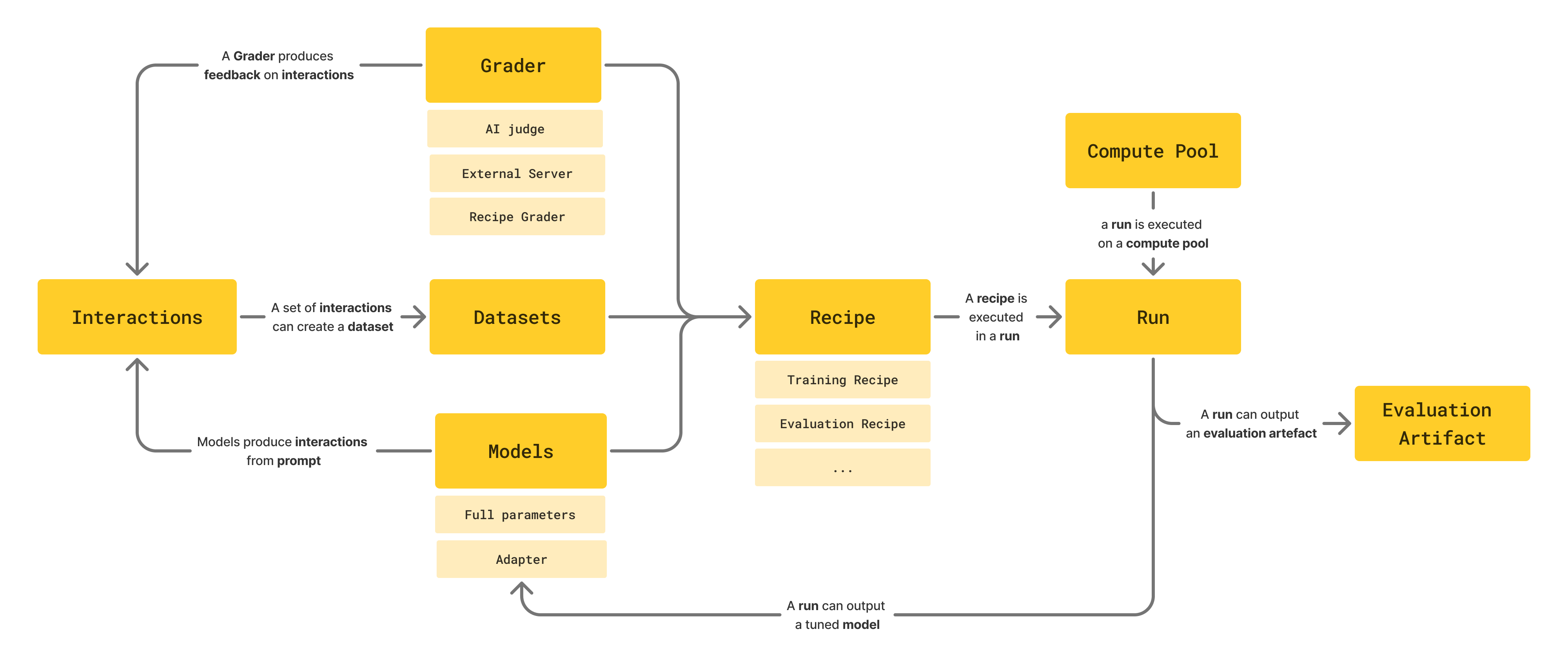
Taxonomy of Adaptive Engine functional components.
- Models can be full parameter artifacts or lightweight adapters. Adaptive Engine model form factor flexibility enables broader and deeper personalization with no sacrifice on inference efficiency.
- Datasets are collections of prompts, optionally with completions and feedbacks, that can be uploaded to the platform. You can use datasets for evaluation and training.
- Recipes are fundamental building blocks that enable you to write custom scripts for various AI workflows such as model tuning, model evaluation, dataset generation and more.
- Runs are executions of recipes with specified input parameters, producing output artifacts such as trained models, evaluation results, or generated datasets.
- Interactions are pairs of prompts and completions generated by models. These traces are automatically logged in Adaptive Engine, and can be explored in the Adaptive Engine interaction store. The interaction store is visible on the left panel of your Adaptive Engine UI.
- Feedbacks are at the center of the data flywheel; they can come from humans (logged via UI or API), from systems (for example logging click or code execution results with the Adaptive SDK), or from AI judges.

